
The Ford Focus RS has been on the road in North America for the better part of a few years now. The performance-bred Focus has completely taken over at amateur track days in California, and loads of differently-optioned examples can be spotted in the wild. Loads.
They’re cheap up front — especially in base trim — as well as affordable to maintain and run. It’s now safe to say that the Focus has fulfilled its excellent potential as the hot hatch America secretly wanted for decades.
Last year, when it came to the RS, Justin Banner’s question was: Do New Performance Cars Even Need Modifying? The word need is perhaps a bit strong, but the aftermarket has clearly had its say, particularly when it comes to the top-spec RS.

There’s no doubt that the RS is a good-looking car that serves as a super-fun grocery getter and canyon carver alike. As already covered, it’s great from the factory and handily deals with emissions regulations while still delivering a comfortable and exciting driving experience.
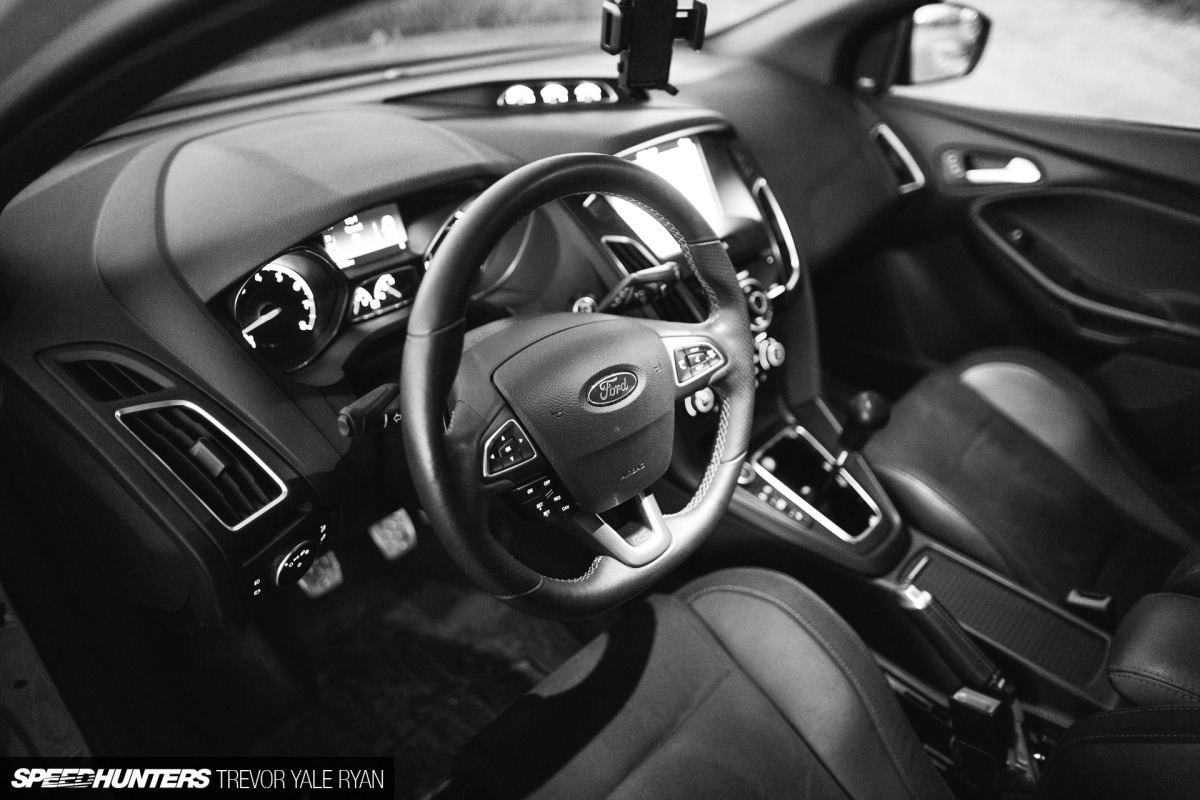
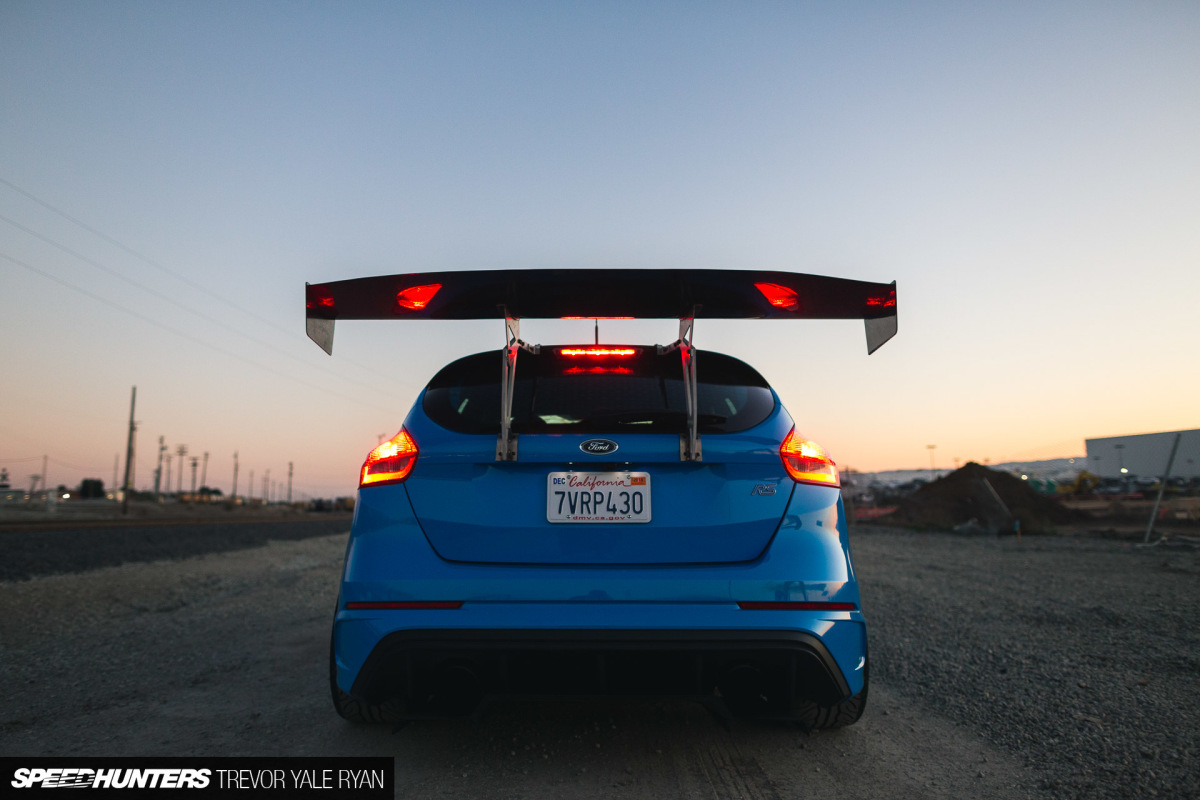
With this comes a full interior and every sort of life-bettering feature you’d expect from a car in 2018. But on this particular example you’ve probably noticed the aggressive styling has been further complemented by some aero. Big aero, at that.
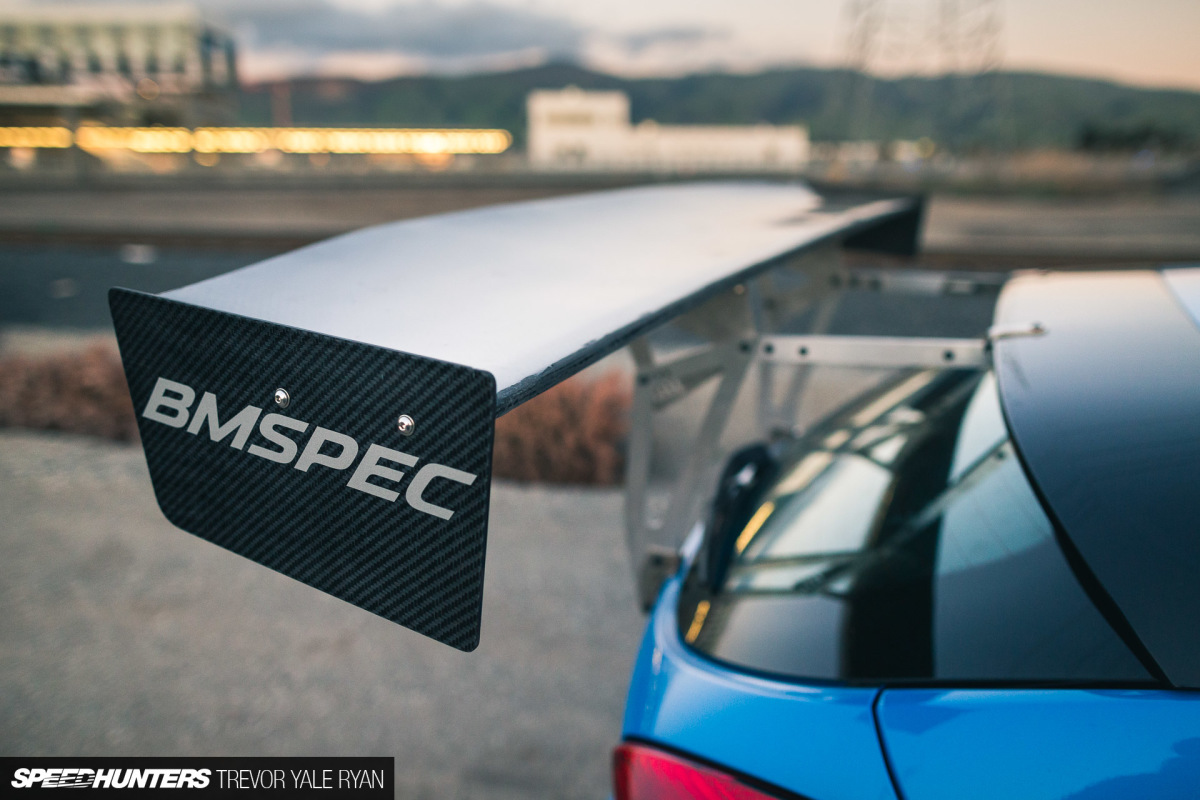
Even though I first saw the car at a Laguna Seca track day, my initial guess was that these parts were mostly aesthetic upgrades. I couldn’t have been more wrong, though.
So, who is this BMSPEC and what exactly is going on here?
Brian Ma started BMSPEC with the idea that “you shouldn’t have to give up practicality or aesthetics to enjoy racing products on your car.” He agrees with the idea that “OEMs are making cars better than ever, but from an enthusiast’s point of view there’s always something you can improve.”
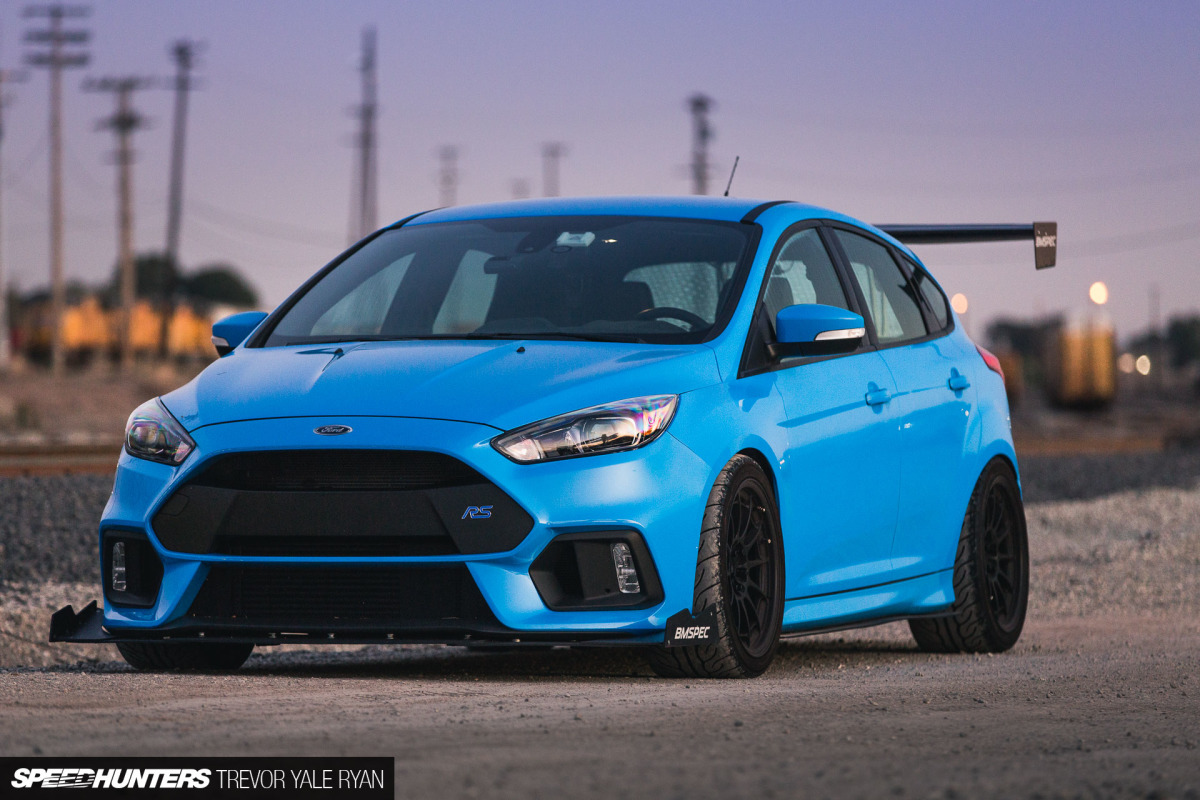
As much as the performance of a car matters, there’s also the fascination and pride that comes with tinkering on something that you already own. This, of course, includes aerodynamics. From the racetrack to design meetings in the offices of OEMs, the aerodynamic performance of a car is a huge consideration. The same is true in the aftermarket as well.
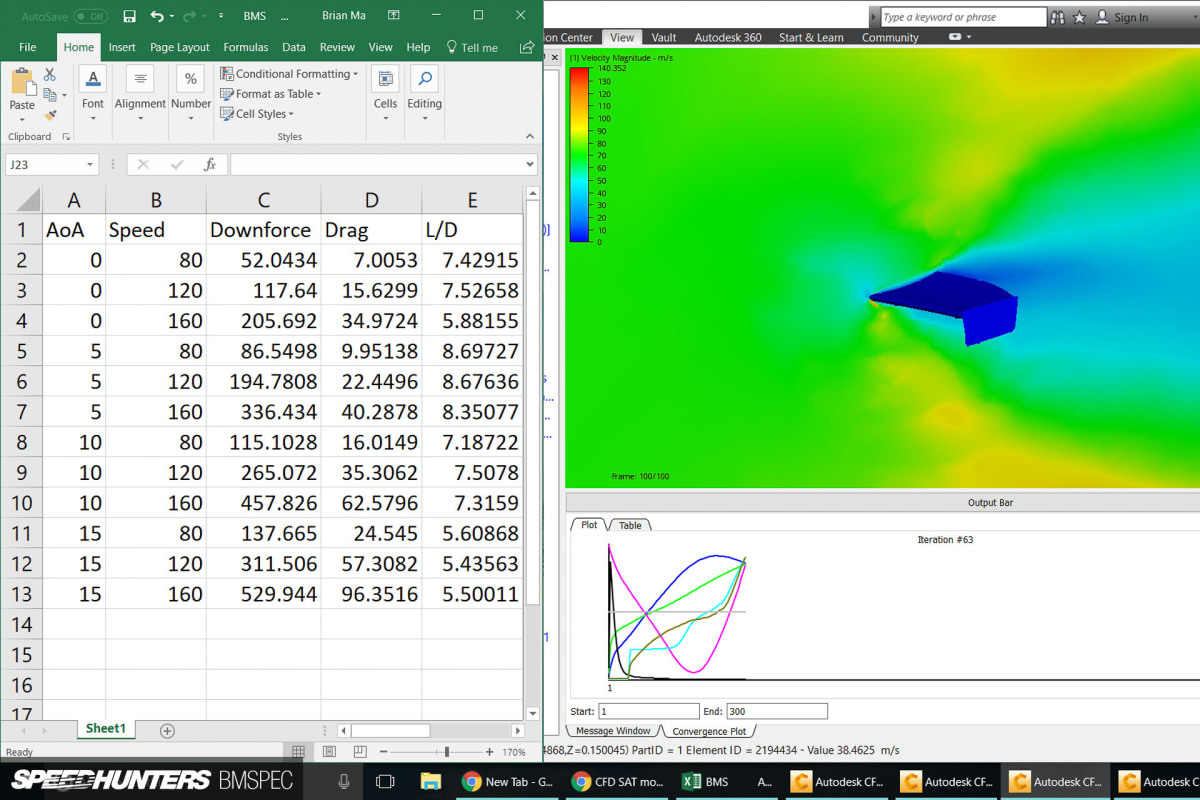
While race teams search for grip and Ford tries to find better fuel economy, Brian asks: “Why can’t we have both?” This is where BMSPEC comes in, and Brian’s shared a few screen caps of various development work with us.
He explains that “lots of people do one CFD simulation to get some pretty pictures and call it a day,” but it’s really in the iterative process of virtual optimization that makes computational fluid dynamics software so valuable. The goal is to achieve what Brian calls “free downforce” which is to say that you’re increasing downforce without increasing drag (which sucks up horsepower and, ultimately, fuel). After months of prototyping, it was time to actually make some parts for a guinea pig RS.
SECOND CHAPTER
Seat Time & Track Testing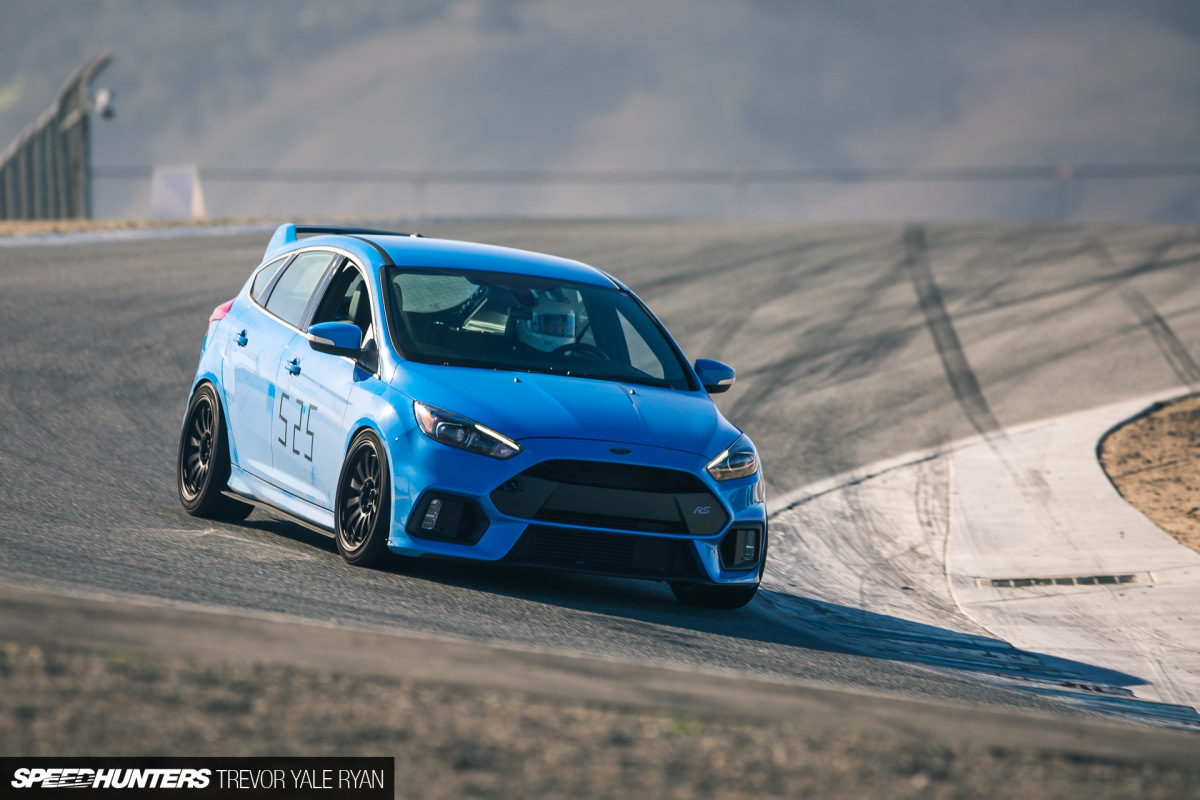
The first thing to do was lay down a base lap time without the aero bits. With Brian at the wheel of David Chen’s 2016 Focus RS, he was able to run consistent sub-1:50 laps at Laguna Seca.
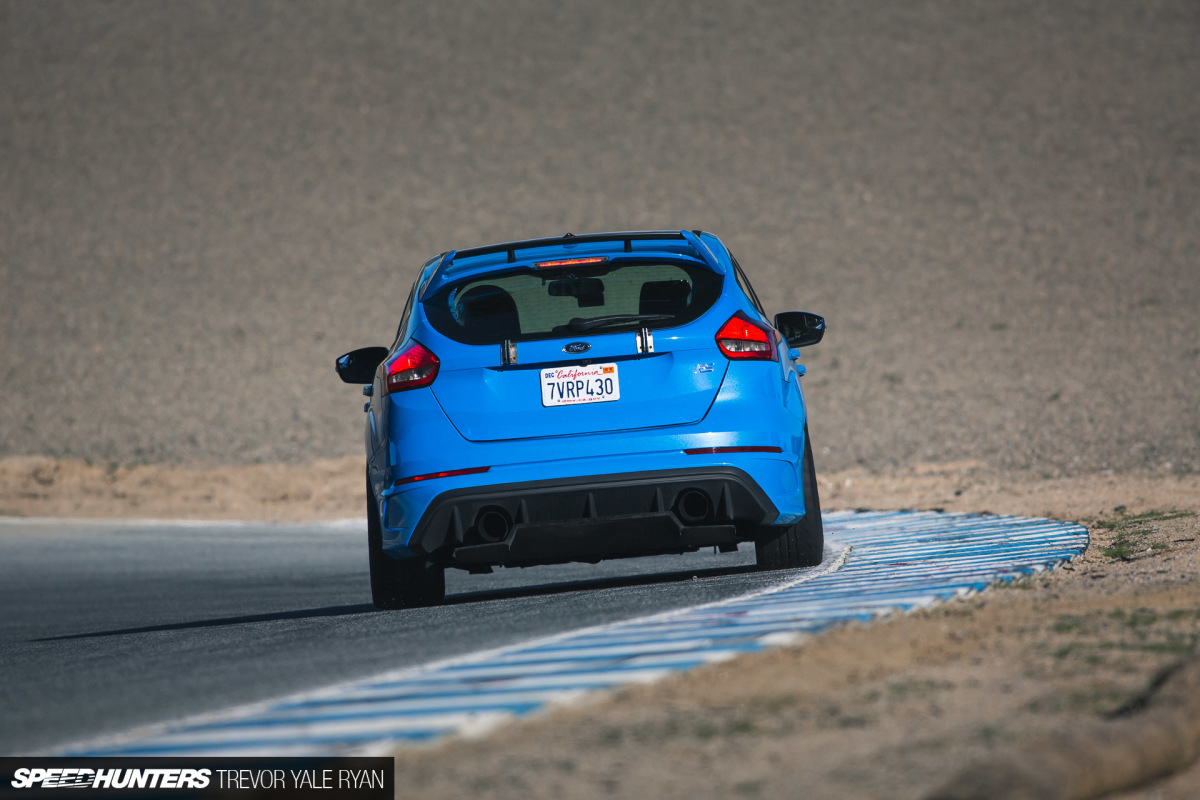
David’s car features Feal 441 coilovers paired with 9kg/mm Swift springs, an upgraded shifter mechanism, and Enkei NT03+M wheels wrapped in Yokohama Advan AD08R rubber. There are a few other modifications, but less the stock brakes it’s a plenty capable setup. It’s also worth noting that not much has been done under the hood, as Justin also predicted in his story.
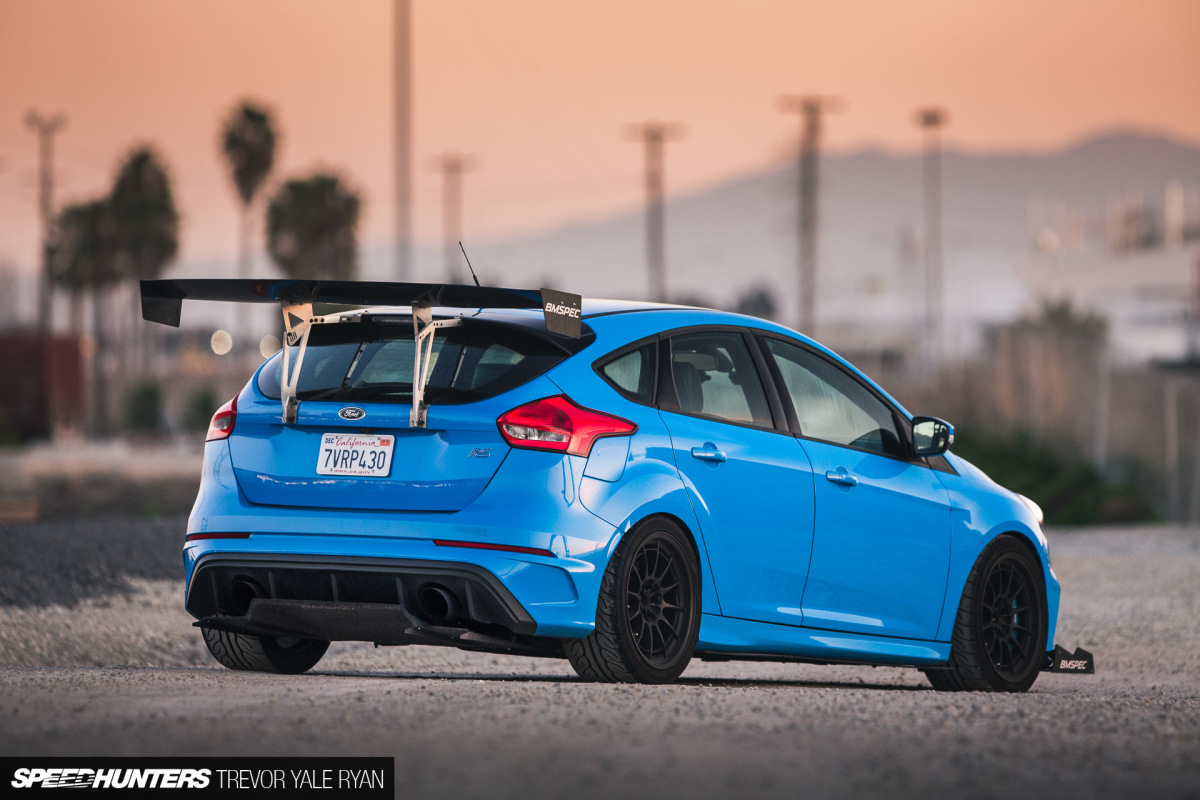
Next, on went the BMSPEC prototype aero which includes the GT wing, front and side splitters and carbon diffuser along with a Focus SE OEM spoiler to replace the stock RS wing.
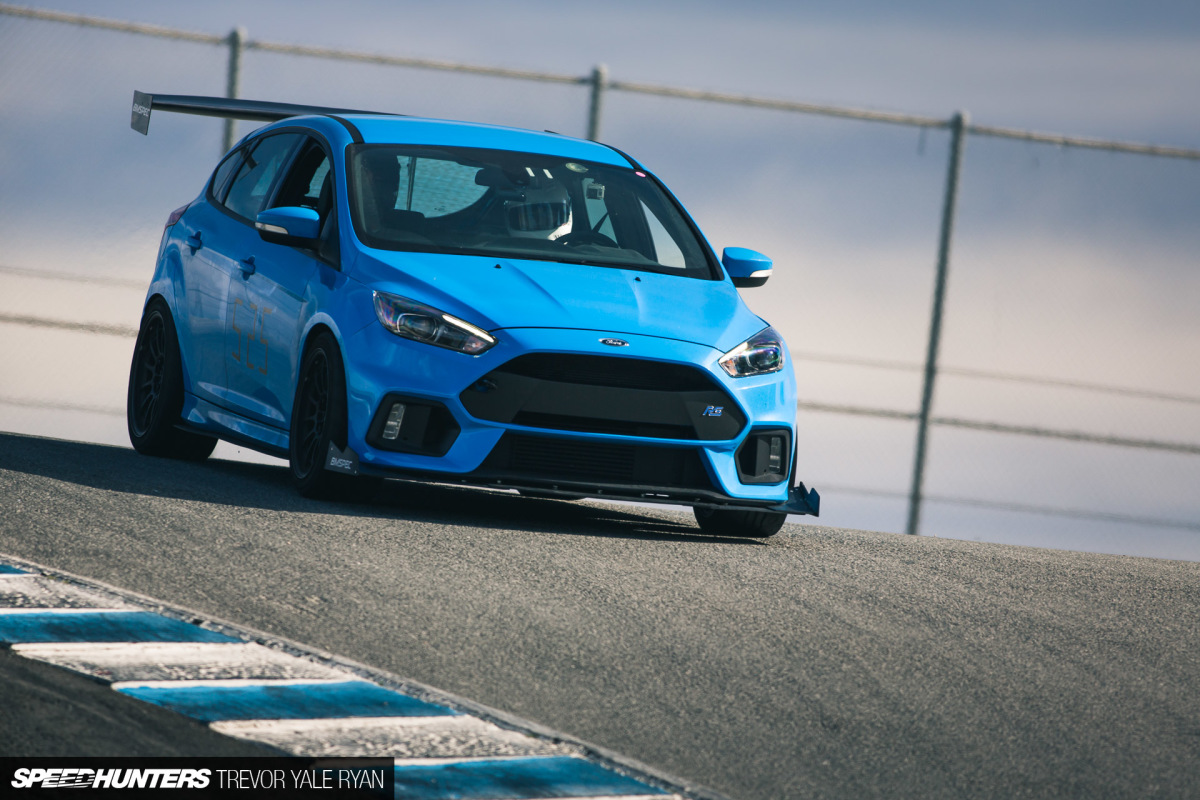
The results? During the same track day the car was up at least 2mph in every corner, with some apexes consistently seeing an extra 5mph. This added up to lap times that, over the course of four sessions, averaged out to no less than two seconds quicker around the course. A good first outing with the new test parts.
After months of street driving — you’ll notice the local toll tag in the windshield of some photos of the car — the long term MPG also checks out with a slight increase in efficiency. So, BMSPEC has succeeded in producing a quicker car without any adverse side effects (read: drag).
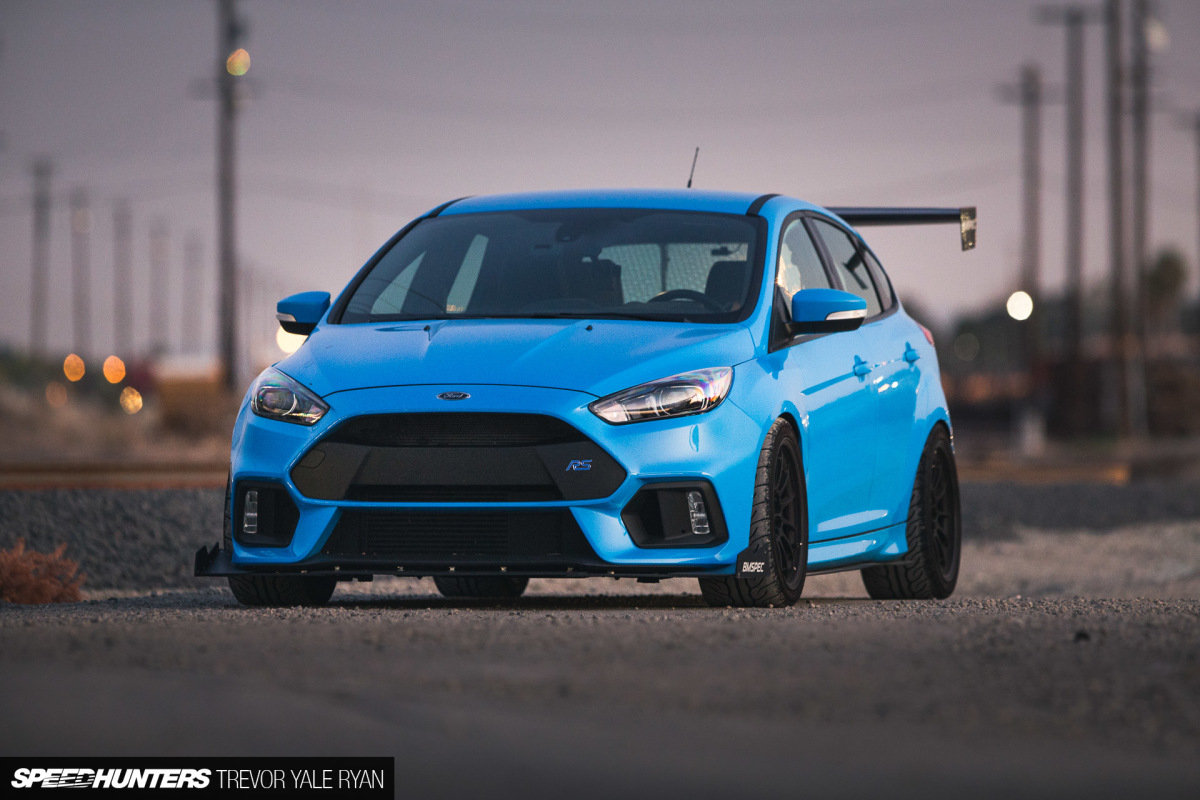
In this sense, it’s free, but Brian is quick to share that these parts do indeed cost money (along with loads of time) to produce and develop. But, in his own words, “if we weren’t okay with that would we ever be enthusiasts to begin with?”
I think not. And, so, while we might not need to modify the current generation of performance cars, especially when it comes to power, there’s still quite clearly plenty to be done and it’s thanks to guys like Brian that this is happening. I’ve since spotted Brian with an all-new, chopped up Civic ready for aero — another car which is quite capable out of the box — so I’m thinking I’ll need to pay BMSPEC a visit in the near future.
Trevor Yale Ryan
Instagram: tyrphoto
TYRphoto.com
Additional Images by Brian Ma
Instagram: BMSPEC
Facebook: BMSPEC
















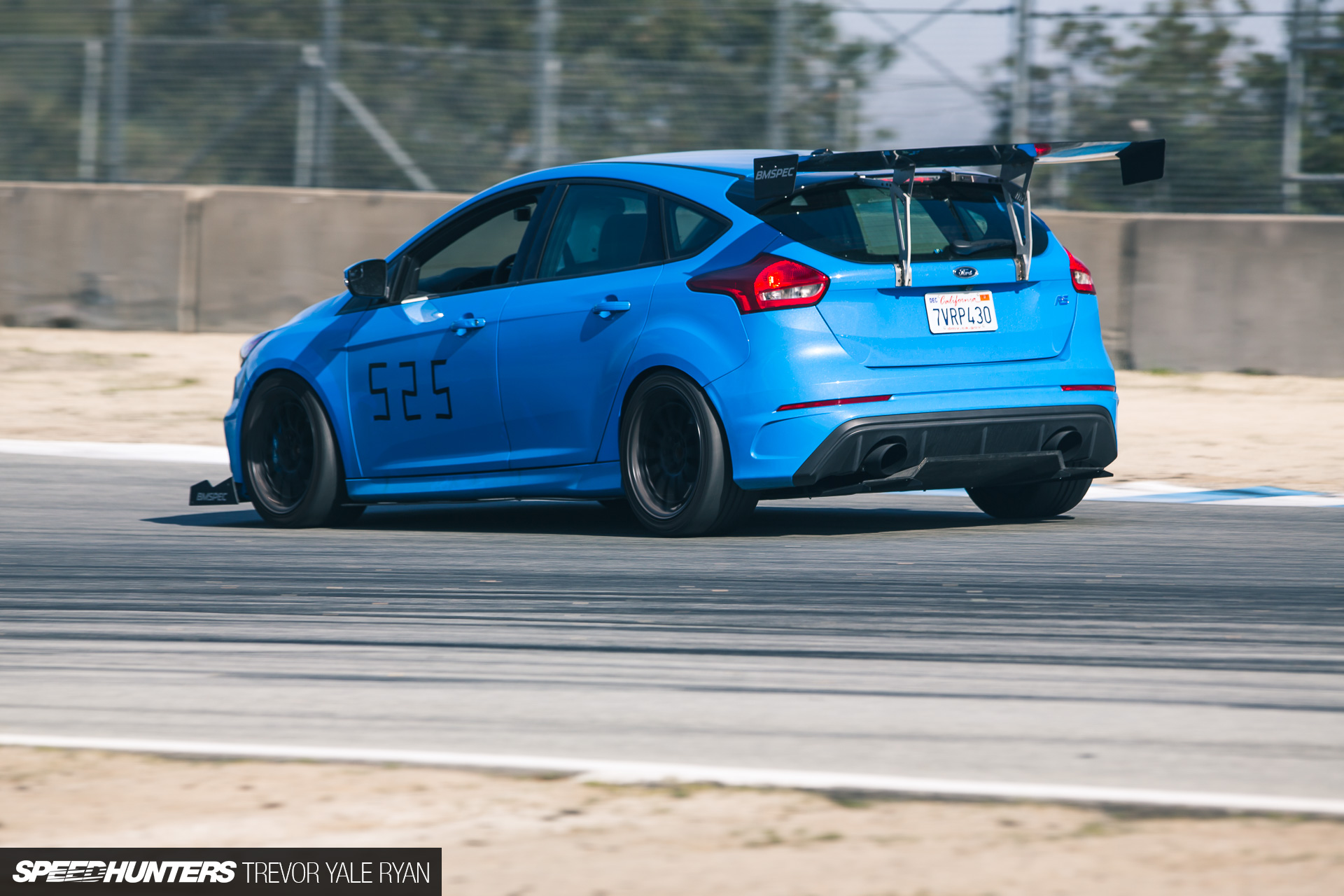
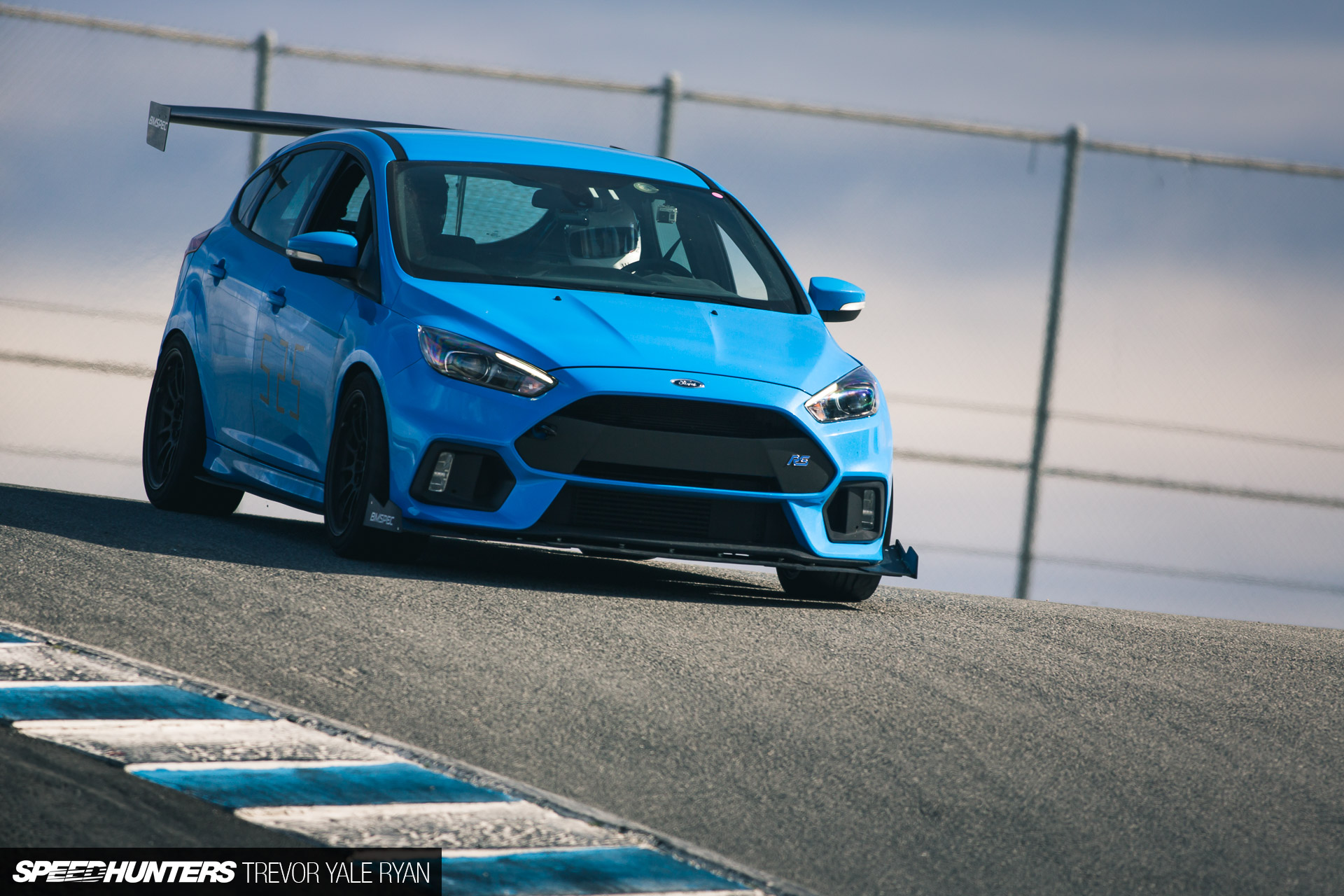




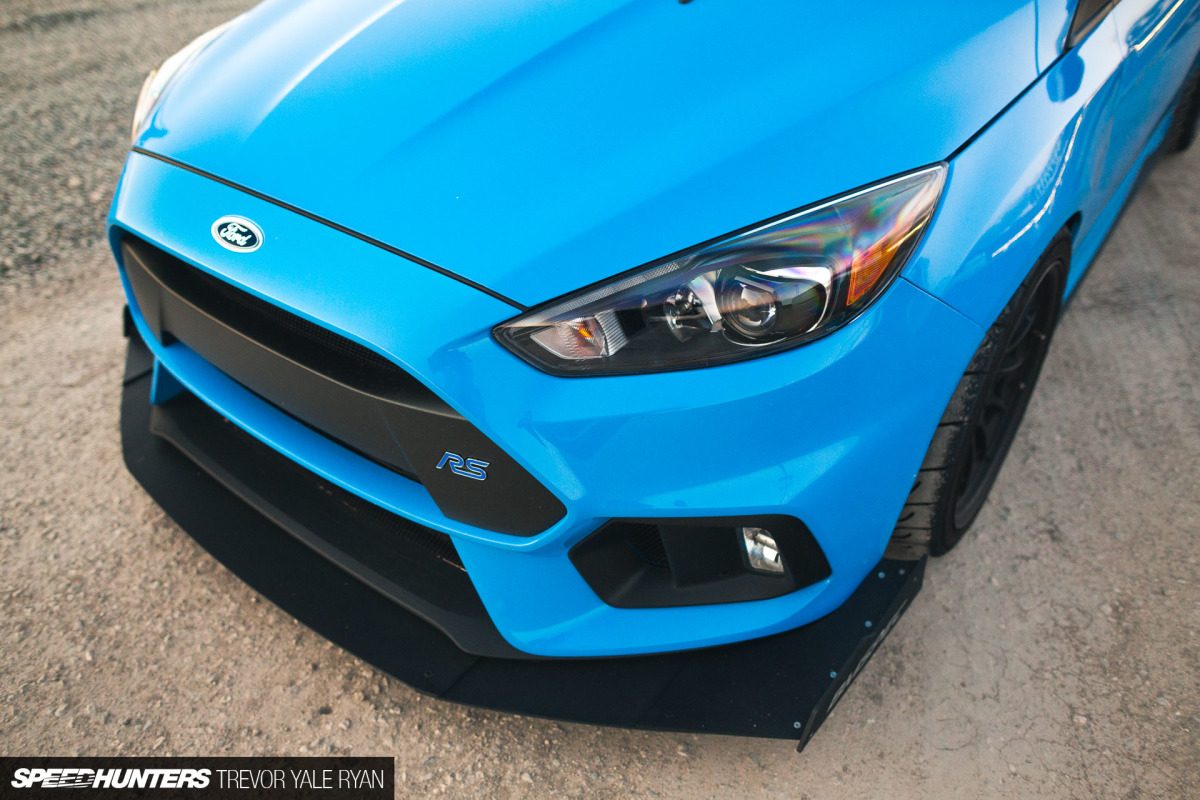
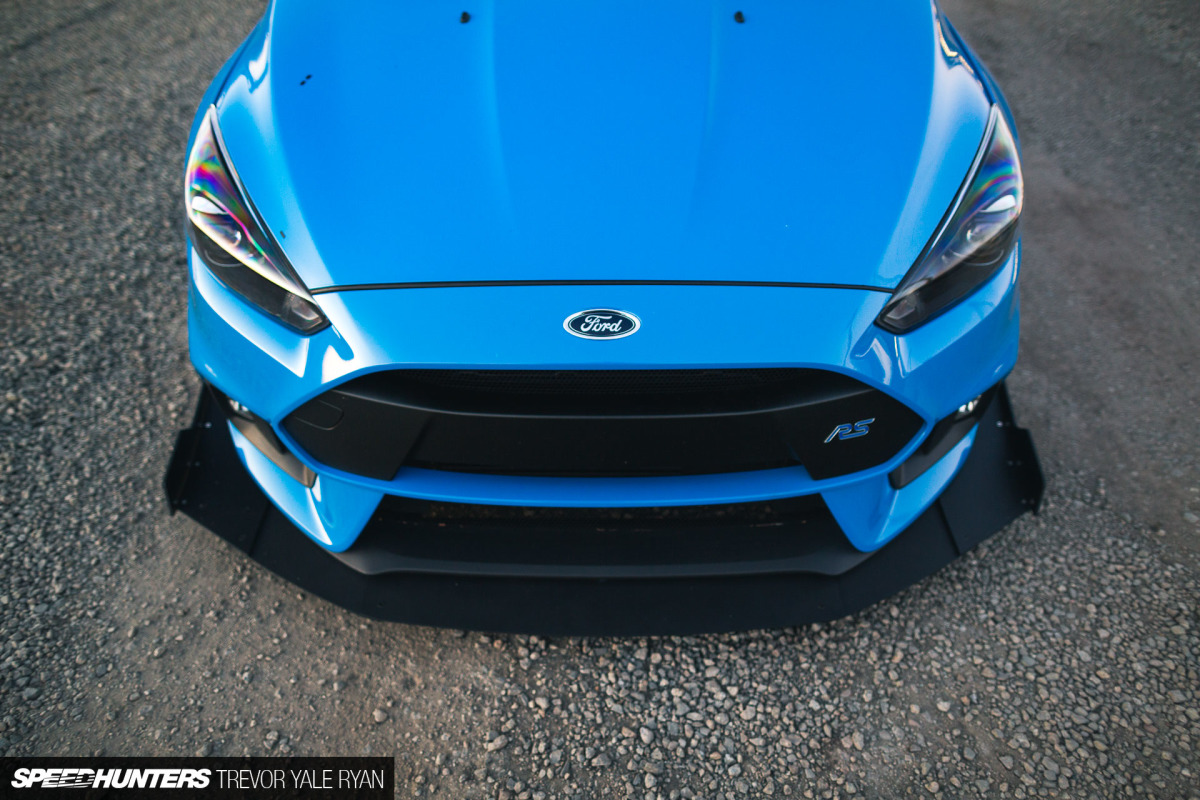
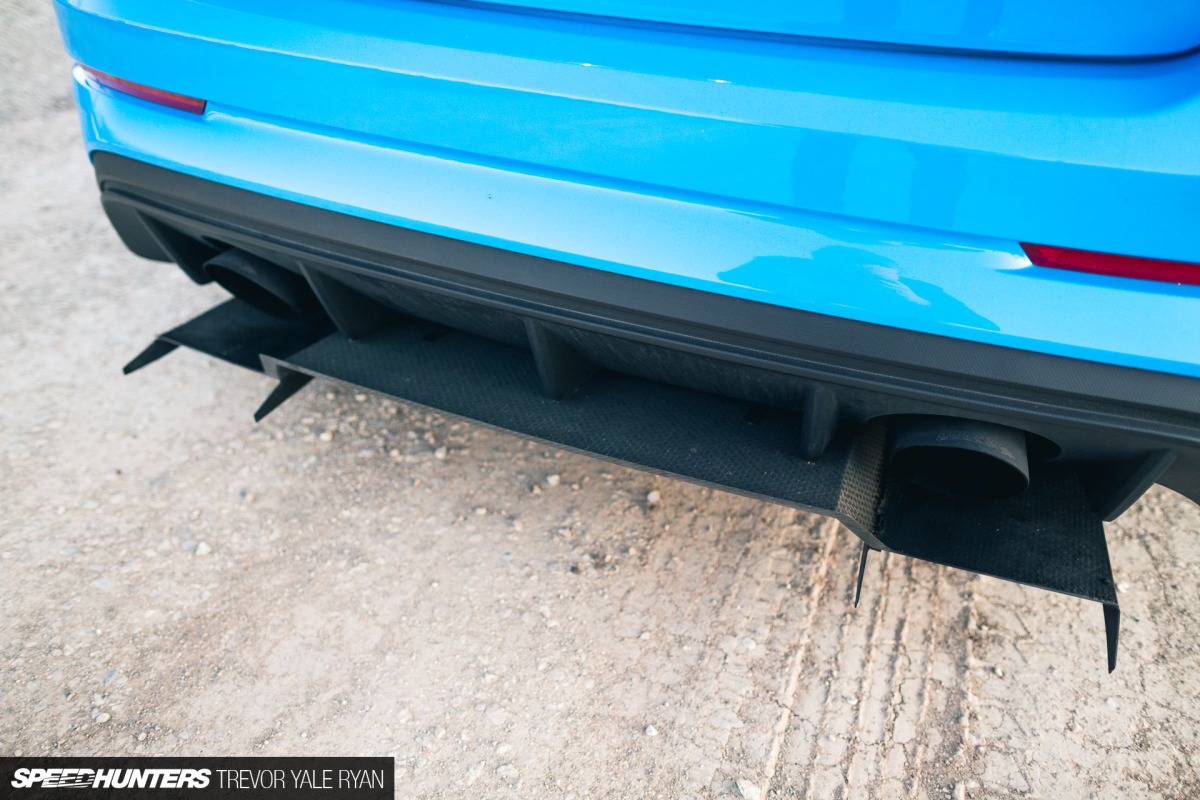
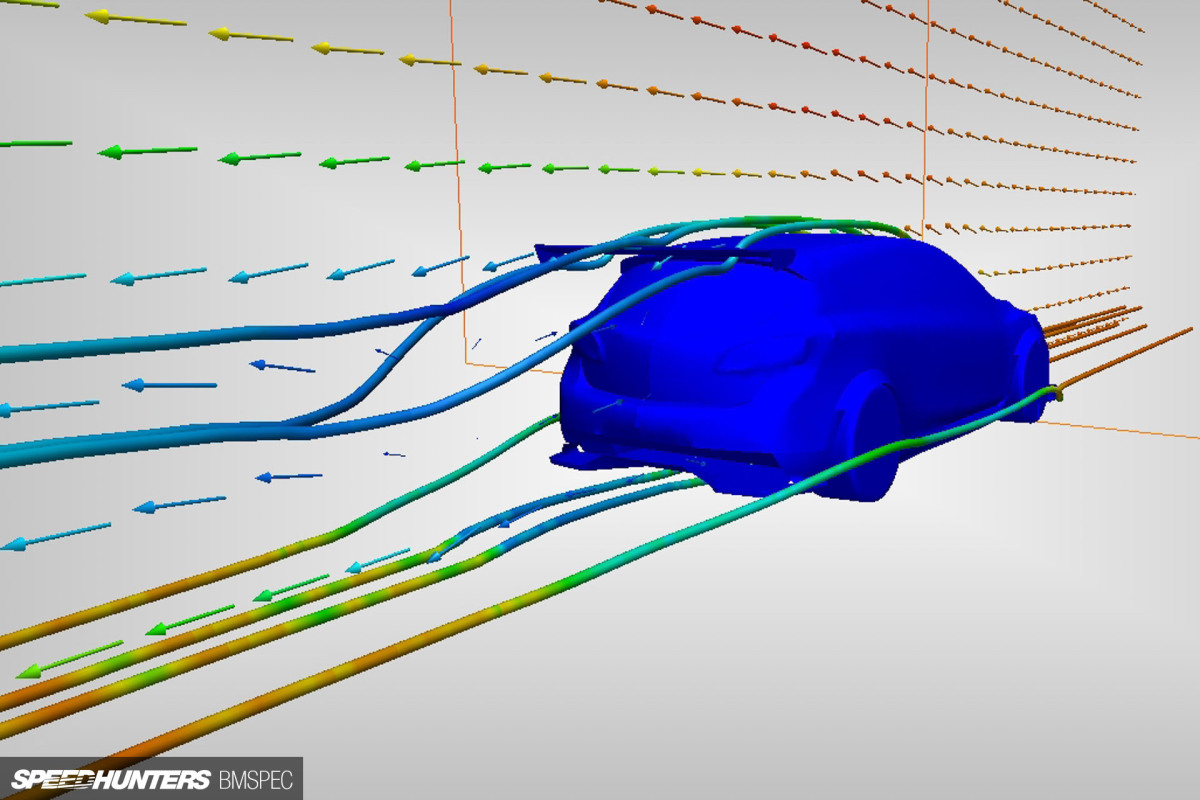
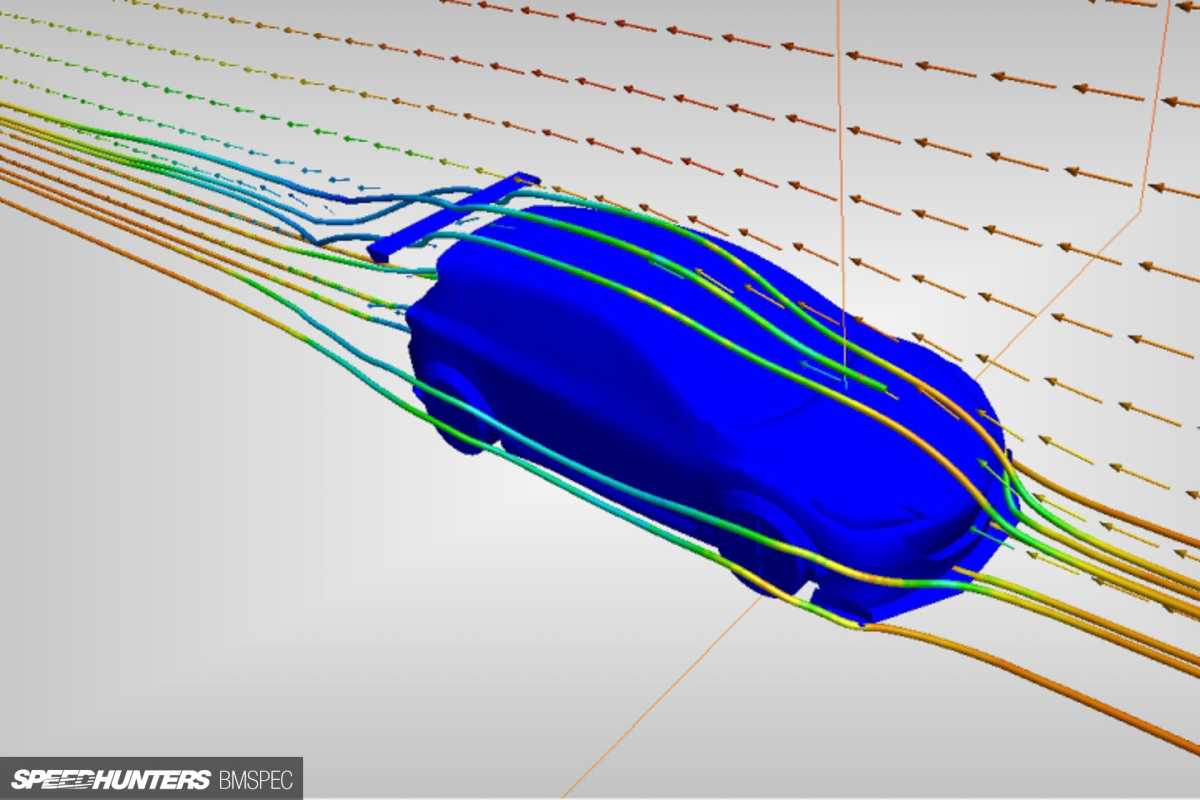
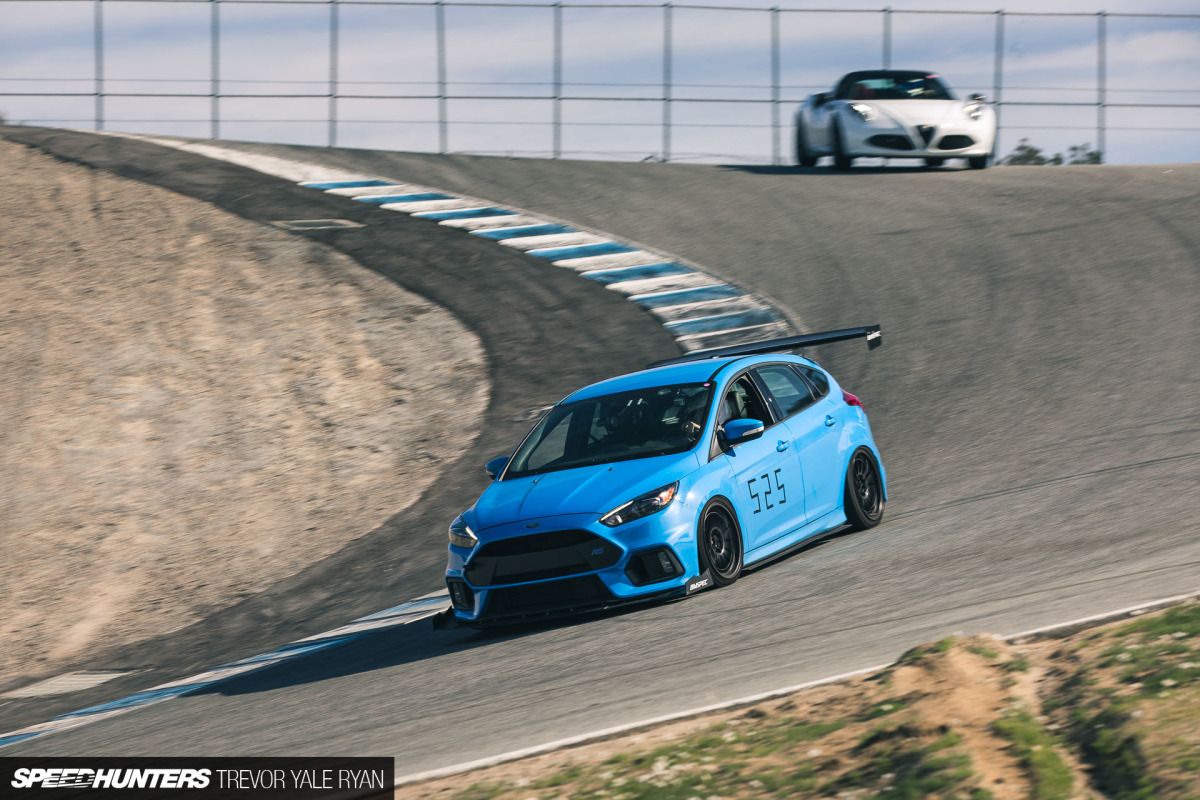
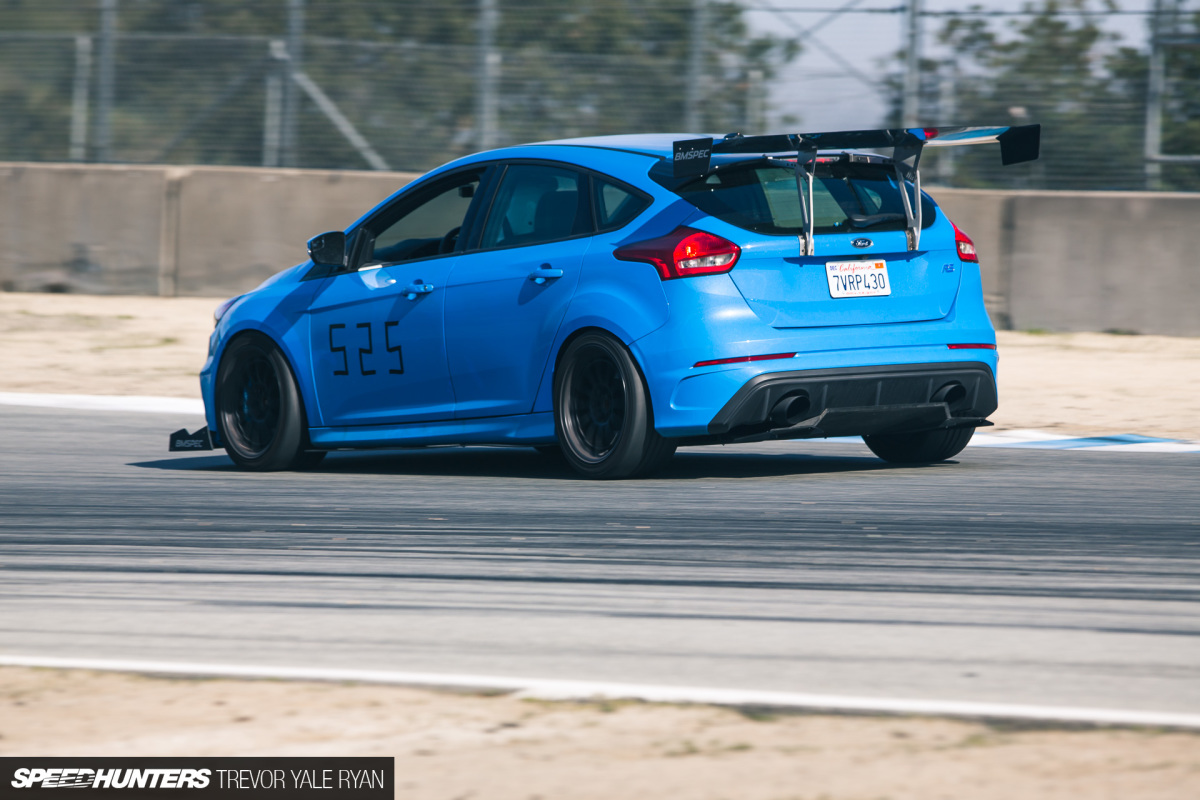





Bmspic aero so gud will this fit my honduh
No doubt a highly capable platform but I cannot stand the god-awful interior layout and bits. Steering wheel is the size of sailboat helm and oddly narrow - any plans to remedy this?
i noticed the steering wheel. it's identical to the one in my '16 Fusion.
1) While race teams search for grip and Ford tries to find better fuel economy, Brian asks: “Why can’t we have both?”
-Because wings that add serious grip also add drag. There is no way around this. That is why you can't have both. As a customer I would immediately look elsewhere for a product if the founder made this statement.
2) What Brian calls “free downforce” which is to say that you’re increasing downforce without increasing drag (which sucks up horsepower and, ultimately, fuel).
-There is no such thing as free downforce. ANY WING OR APPENDAGE YOU PUT ON A CAR THAT STICKS UP FROM THE BODY WORK WILL CAUSE DRAG. There are no exceptions to this rule regardless of orientation.
I'd conclude the guy who is making these products isn't the best guy to be selling them.
Look what we have here, a keyboard warrior in the shape of the second coming of Adrian Newey.
The assumptions that you base your conclusion off of are wrong. There is an incredible amount of turbulence that is created behind a car, when managed correctly you can reduce drag and increase down-force. The most immediate example that i can think of is flattening the bottom of the car and adding a rear diffuser. Another example i can think of is vortex generators on the trailing edge of the roof that not only help activate a rear wing but keep the air traveling along the sides of the car from spilling into the wake of the car.
We are talking about a hatchback here, not a Porsche, mclaren, lambo or Ferrari which have a much lower profile and flat bottoms from the factory. Aerodynamics is not as intuitive as you think and no where near as straight forward and all you need to do is look at the areo development in F1 to see that.
I know. I acquired that information from two friends who used to design planes / open wheel racing cars. Very aware of how complicated it is. Flat floors are not an appendage that sticks in the wind like a wing. Maybe I didn't word that clearly.
As far as the vortex generator thing this is all pretty situational dependent. That would depend on height of the wing as well as angle of attack AND the fulcrum effect the wing has due to where it is mounted in relation to the rear axle.
lol Mook.
I think the nature of your friends aero experience is leading to some miscommunication. With planes and formula car wings, they're both in clean air and act as a somewhat independent entity from the rest of the system. The change in the wings drag or downforce/lift numbers are almost directly proportional to the system total change. In those context, they're right.
In a production car type application, the wing affects the rest of the cars aero as part of the system. The wing may create drag, but also decrease in turbulence over the hatch may reduce the drag on the car by an equal or greater margin while still creating downforce. That doesn't mean the wing doesn't create drag, but rather that it also cancels out some of the vehicles drag around the rear by an equal or greater degree. The sum of it all is in your favor for both, therefore 'free'.
That does make sense and I am going to speak with them to further clarify my understanding on the subject, however, those things should not be thrown out without explanation as they can lead people very far astray (per the authors words not yours).
You raise a good point here Douglas and I'll be diving deeper into the engineering/math side of this on my next visit. For what it's worth, the slight increase in mpg could have also been due to the owner of the car not driving it as hard on the street after owning it a while. But the takeaway is that the aero didn't create excess drag in simulation and doesn't seem to be day to day, either.
How data is collected is more important than what the data says. For the peopel who want to talk shit I'm not seeing anything but sheep with their wallets open.
Prove the claims. It's incredible how many people have a fundamental lack of the scientific method and just blindly spread their cheeks to get an ass ramming from the latest and greatest in "aero" companies that consistently never provide data.
Show meeee the data.
I hate to be the bearer of bad news but when given a completely stock car is it actually easy to increase down-force and reduce drag. For example flattening the floors and adding a rear diffuser is the easiest way to reduce drag and increase down-force, for reference: https://www.ijirset.com/upload/2017/icrtes/mech/10_Enhancement%20of%20Aerodynamic%20Drag%20Reduction%20of%20Passenger%20Vehicle%20using%20CFD%20analysis-Review%20_DE_.pdf
The thing is that your conclusions would be correct if the stock body of the car was aerodynamically efficient from the factory. That is a false assumption as the aerodynamics from the factory are the best that the factory can do given the fact that it has to make the parts for mass production and sitting with a specific budget while also adhering to crash test standards. So there is lots of room for aerodynamic optimization but as the article states, it costs money because the R&D takes time and the resultant parts are not suitable for mass production. so as you can see, your conclusion is based off of some false assumptions and a not fully complete understanding of aerodynamics. There is a lot you can do to the turbulence that is created in a cars wake to reduce drag while increasing down-force, and that is before you even get into vortex generators and other trickery.
If that's true then why do none of the Texas miles guys run wings where the whole goal is top speed.
We have to also remember, OEM is great and all, but they're really limited to make things suitable for the everyday driver. Following rules, regulations, etc. They're capable of a lot more, but aren't really allowed to.

So there will pretty much always be room for improvement over OEM, where us enthusiasts are willing to flex the original design a little
Nice. Was wondering how long it would take untill BMSPEC appears on Speedhunters. Would love to see more from them in depth. Also a little bit about their Mazda 3 developments.
Need some aero goodies like this for my mk6 GTI
Cool development of parts, but still can't stand the Focus RS.
Slab-sided boring styling is a fail from Ford, and was intentional according to designer interviews.
I'll take my STi's any day, followed by Evo's, with the mostly front-wheel drive Focus RS way down the list.
What was the effect on peak velocity at the track?
and is the company willing to share that data. This wreaks of bs and SH taking marketing dollars. Sniff sniff.
It's no secret we have partners, but BMSPEC isn't one of them. This is just a hardworking guy who's making good, functional parts and adding value to the aftermarket one platform at a time. He's also one of few willing to share test data and talk numbers, which we'll go into more on my next visit.
We did not see any change plus or minus in top speed at our Laguna test day, however a bunch of variables are involved in that (heat soak and oil temps) so I'm not going to say anything final yet.
We have another test car -- Jackie Ding and his S2000 time attacker -- that actually saw an increase in top speed and acceleration at speed vs stock S2000 CR aero. None of our data is secret, you simply can't fit all the data we've taken into an easy to read article.
Thanks for sharing!
Thanks for the reply and ignore the keyboard amature rocket scientists lol. Cool to see someone taking a solid testing method to parts keep it up!
keep it up!
Matsuda - please publish this data for people to see in that case. This shouldn't be a big deal, right?
What was done before / after to Jackies car aerodynamically?
Stock S2000 CR lip and wing vs BMSPEC splitter and wing. Straightforward comparison...
If no other changes were made to the car I would find that data interesting.
Nice to see BMSPEC getting some exposure. We have a similar guy in the UK called BYC Designs. He designed a full aero kit for my car and ran it through CFD to work out the best position for the wing etc... All far beyond anything I understand but it did make a massive difference to the feel of the car and the confidence I had through the faster corners.
Wow that is insane!
Never seen anyone do this to a Focus RS before
https://www.google.com.ar/url?sa=i&rct=j&q=&esrc=s&source=images&cd=&cad=rja&uact=8&ved=0CAcQjRxqFQoTCJi51pq_uMgCFYeHkAoden0PWQ&url=https://www.telemedical.es
The funny thing is all this time has been spent to lower the lap time with aerodynamics when you could have done exactly the same thing by removing a few hundred pounds from the vehicle.
Wait...that's free and has proven gains. The data will show that the front splitter is doing more to benefit the car than the rear diffuser or the rear wing. If this car doesn't have a flat floor the rear diffuser is likely ineffective and while the wing is nice I doubt it produces any significant downforce at speeds the average consumer will use it at.
I would hope after 4 additional sessions of seat time that the driver would improve. The real test is to remove the aero and have him do 4 more sessions. Then you have A to B to A testing which eliminates the driver improving as a variable.
Hah! That would actually be valid testing and would refute a lot of the BS. What you find if you dive deep enough into aero is that a lot of people are just out there trying to make a dollar. Very few people have a true grasp of how to implement these things efficiently.
There's a reason why Adrian Newey makes millions of dollars a year. It's not simple, but a lot of what is happening in the lower ranks is total bullshit.